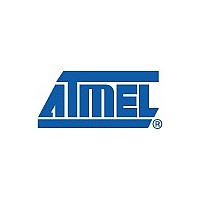AT90PWM161 Atmel Corporation, AT90PWM161 Datasheet - Page 13

AT90PWM161
Manufacturer Part Number
AT90PWM161
Description
Manufacturer
Atmel Corporation
Datasheet
1.AT90PWM161.pdf
(325 pages)
Specifications of AT90PWM161
Flash (kbytes)
16 Kbytes
Pin Count
20
Max. Operating Frequency
16 MHz
Cpu
8-bit AVR
Hardware Qtouch Acquisition
No
Max I/o Pins
20
Ext Interrupts
3
Usb Speed
No
Usb Interface
No
Spi
1
Graphic Lcd
No
Video Decoder
No
Camera Interface
No
Adc Channels
11
Adc Resolution (bits)
10
Adc Speed (ksps)
125
Analog Comparators
3
Resistive Touch Screen
No
Dac Channels
1
Dac Resolution (bits)
10
Temp. Sensor
Yes
Crypto Engine
No
Sram (kbytes)
0.25
Eeprom (bytes)
512
Self Program Memory
YES
Dram Memory
No
Nand Interface
No
Picopower
No
Temp. Range (deg C)
-40 to 125
I/o Supply Class
2.7 to 5.5
Operating Voltage (vcc)
2.7 to 5.5
Fpu
No
Mpu / Mmu
no / no
Timers
1
Output Compare Channels
8
Input Capture Channels
1
Pwm Channels
6
32khz Rtc
No
Calibrated Rc Oscillator
Yes
Available stocks
Company
Part Number
Manufacturer
Quantity
Price
Part Number:
AT90PWM161-16MN
Manufacturer:
ATMEL/爱特梅尔
Quantity:
20 000
Part Number:
AT90PWM161-WN
Manufacturer:
ATMEL/爱特梅尔
Quantity:
20 000
- Current page: 13 of 325
- Download datasheet (6Mb)
3.8
3.8.1
7734P–AVR–08/10
Reset and Interrupt Handling
Interrupt Behavior
Figure 3-4.
Figure 3-5
tion using two register operands is executed, and the result is stored back to the destination register.
Figure 3-5.
The AVR provides several different interrupt sources. These interrupts and the separate Reset Vector each
have a separate program vector in the program memory space. All interrupts are assigned individual
enable bits which must be written logic one together with the Global Interrupt Enable bit in the Status
Register in order to enable the interrupt. Depending on the Program Counter value, interrupts may be
automatically disabled when Boot Lock bits BLB02 or BLB12 are programmed. This feature improves
software security. See the section
The lowest addresses in the program memory space are by default defined as the Reset and Interrupt Vec-
tors. The complete list of vectors is shown in
levels of the different interrupts. The lower the address the higher is the priority level. RESET has the
highest priority, and next is PSC2 CAPT – the PSC2 Capture Event. The Interrupt Vectors can be moved
to the start of the Boot Flash section by setting the IVSEL bit in the MCU Control Register (MCUCR).
Refer to
the Boot Flash section by programming the BOOTRST Fuse, see
Write Self-Programming” on page
When an interrupt occurs, the Global Interrupt Enable I-bit is cleared and all interrupts are disabled. The
user software can write logic one to the I-bit to enable nested interrupts. All enabled interrupts can then
interrupt the current interrupt routine. The I-bit is automatically set when a Return from Interrupt instruc-
tion – RETI – is executed.
Register Operands Fetch
“Interrupts” on page 61
2nd Instruction Execute
3rd Instruction Execute
ALU Operation Execute
1st Instruction Execute
shows the internal timing concept for the Register File. In a single clock cycle an ALU opera-
2nd Instruction Fetch
3rd Instruction Fetch
4th Instruction Fetch
1st Instruction Fetch
Total Execution Time
Result Write Back
The Parallel Instruction Fetches and Instruction Executions
Single Cycle ALU Operation
clk
clk
CPU
CPU
for more information. The Reset Vector can also be moved to the start of
“Memory Programming” on page 247
232.
T1
“Interrupts” on page
T1
T2
T2
61. The list also determines the priority
“Boot Loader Support – Read-While-
for details.
AT90PWM81
T3
T3
T4
T4
13
Related parts for AT90PWM161
Image
Part Number
Description
Manufacturer
Datasheet
Request
R

Part Number:
Description:
Digital Attenuator 32-Pin FQFP T/R
Manufacturer:
M/A-Com Technology Solutions
Datasheet:

Part Number:
Description:
MLP DIGITAL ATTENUATOR
Manufacturer:
M/A-Com Technology Solutions

Part Number:
Description:
Digital Attenuator 32-Pin FQFP
Manufacturer:
M/A-Com Technology Solutions
Datasheet:

Part Number:
Description:
Digital Attenuator 32-Pin FQFP T/R
Manufacturer:
M/A-Com Technology Solutions
Datasheet:

Part Number:
Description:
MLP DIGITAL ATTENUATOR
Manufacturer:
M/A-Com Technology Solutions

Part Number:
Description:
Digital Attenuator, 50 Db, 6-bit, Ttl Driver, Dc-2.4 Ghz
Manufacturer:
Tyco Electronics
Datasheet:

Part Number:
Description:
Digital Attenuator, 31.5 Db, 6-bit, Ttl Driver, Dc-4.0 Ghz
Manufacturer:
Tyco Electronics
Datasheet:

Part Number:
Description:
Digital Attenuator, 31.5 Db, 6-bit, Ttl Driver, Dc-4.0 Ghz
Manufacturer:
Tyco Electronics
Datasheet:

Part Number:
Description:
Digital Attenuator, 31db, 5-bit, Ttl Driver Dc - 3.0 Ghz
Manufacturer:
Tyco Electronics
Datasheet:

Part Number:
Description:
Digital Attenuator, 15.5 Db, 5-bit, Ttl Driver, Dc-3.5 Ghz
Manufacturer:
Tyco Electronics
Datasheet:

Part Number:
Description:
INTERVAL AND WIPE/WASH WIPER CONTROL IC WITH DELAY
Manufacturer:
ATMEL Corporation
Datasheet:

Part Number:
Description:
Low-Voltage Voice-Switched IC for Hands-Free Operation
Manufacturer:
ATMEL Corporation
Datasheet:

Part Number:
Description:
MONOLITHIC INTEGRATED FEATUREPHONE CIRCUIT
Manufacturer:
ATMEL Corporation
Datasheet:

Part Number:
Description:
AM-FM Receiver IC U4255BM-M
Manufacturer:
ATMEL Corporation
Datasheet:











